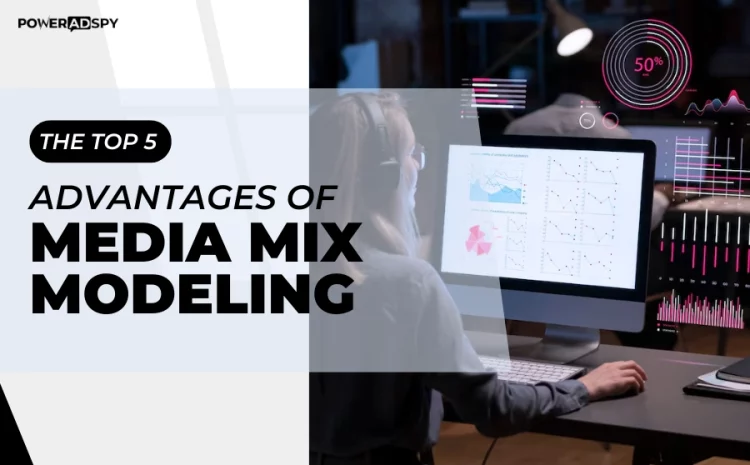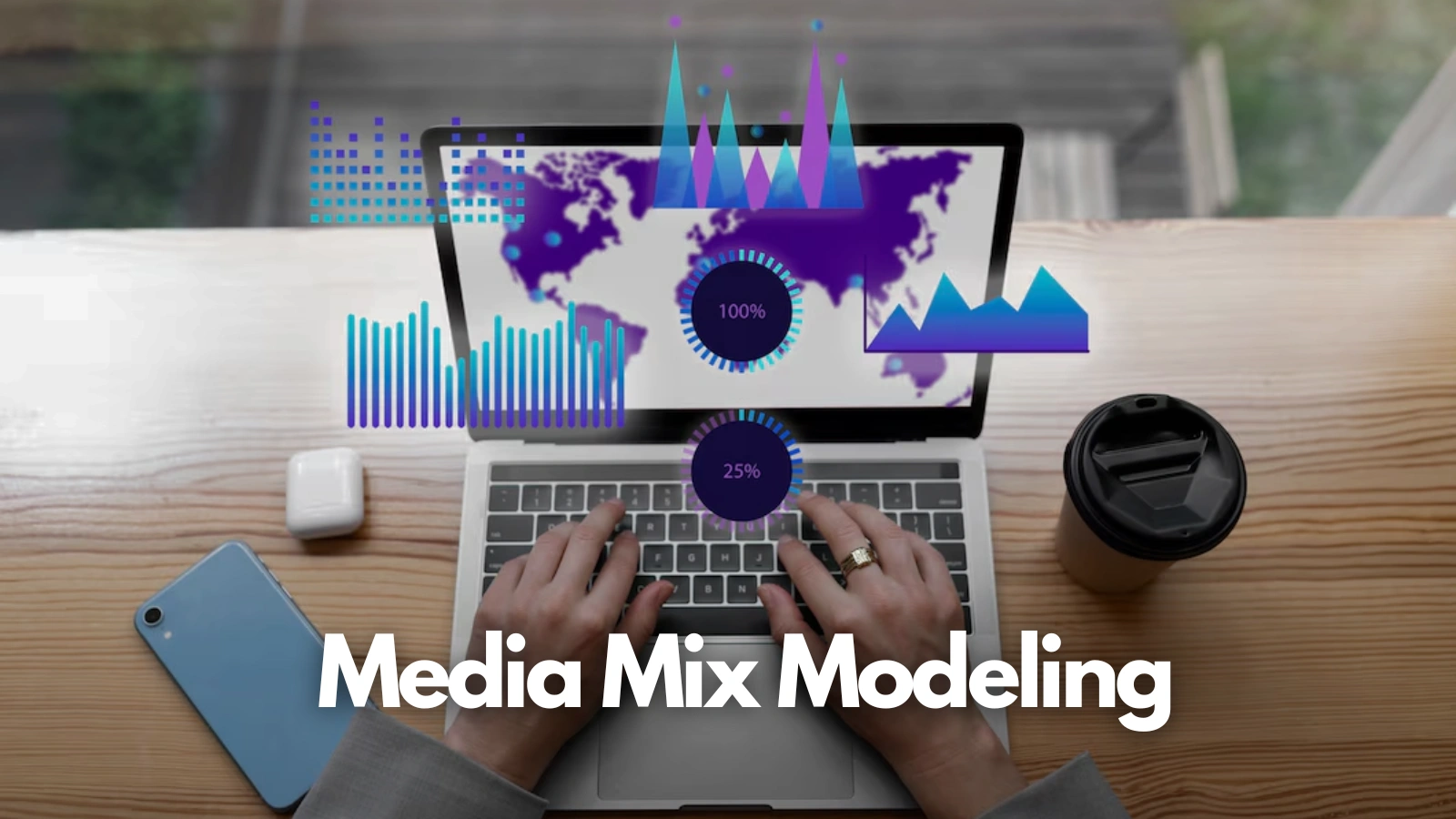The Top 5 Advantages Of Media Mix Modeling
Are you spending big on ads but unsure what’s actually working? You’re not alone. With so many platforms—TV, social media, search, and more—it’s tough to know which ones drive real results. That’s where media mix modeling (MMM) comes in.
MMM in marketing helps you see the big picture. It shows how each channel impacts sales, so you can stop guessing and start making smarter moves. Want to know if your TikTok ads are boosting in-store sales? Or if your TV ads are hitting the right audience at the right time? Media mix modeling gives you the answers.
It’s not just about tracking numbers—it’s about optimizing your budget. With MMM, you can fine-tune your marketing strategy, cut wasted spending, and maximize your ROI. The result? More sales, better decisions, and a stronger business.
In this blog, we’ll explore the top five advantages of MMM and why it’s a must-have for modern marketers. If you’re serious about making your marketing dollars work harder, keep reading!
In a hurry? Listen to the blog instead!
What Is Media Mix Modeling?
Media mix modeling (MMM) is a data-driven technique that helps marketers measure the impact of their advertising efforts across multiple channels. It analyzes historical data to determine how different marketing activities—like TV, social media, and digital advertising—contribute to sales, conversions, and brand growth.
Using statistical regression, MMM in marketing identifies which channels deliver the best ROI. It considers external factors like seasonality, economic shifts, and consumer behavior to provide a clear picture of what’s working and what’s not. Unlike traditional attribution models that focus on digital touchpoints, MMM evaluates both online and offline campaigns, making it a powerful tool for optimizing marketing spend.
The process isn’t static—it continuously improves by learning from actual results. This means marketers can refine strategies over time, ensuring smarter budget allocation. Want to know if your influencer campaigns drive more revenue than TV ads? Or if discount promotions lead to repeat customers? Media mix modeling provides answers, helping brands maximize their marketing performance.
With a well-built MMM, businesses can predict future outcomes, measure brand equity, and optimize their marketing investments for both short-term wins and long-term growth.
How Media Mix Modeling Works
In today’s world, marketers use data and algorithms every day. However, understanding how MMM works can help businesses make better marketing decisions.
The Basics of Media Mix Modeling
The idea of a marketing mix media started in the 1950s when advertisers compared marketing to cooking—finding the perfect mix of ingredients to get the best results. But for years, finding that “perfect mix” was a guessing game. Marketers knew different ads worked in different ways, but they had no clear way to measure what was actually driving sales.
That’s where MMM comes in. It uses statistics to analyze past marketing performance and predict future success. By looking at different factors—like ad spend, seasonality, and consumer behavior—MMM helps marketers understand which channels bring the best return on investment.
The Evolution of MMM
The concept of using numbers to predict outcomes isn’t new. In the 1700s, Isaac Newton attempted to use math to predict celestial movements. However, real statistical regression models weren’t widely used until the 1900s. Back then, running complex calculations took a long time, making it hard to use media mix modeling in everyday marketing.
By the 1970s, large companies like Coca-Cola started using early forms of MMM, but it wasn’t until the 1990s and 2000s that it became more common. Thanks to better computers and the rise of digital advertising, marketing mix media became easier to track.
How It Works Today
Modern MMM looks at historical data and external factors to measure the effectiveness of marketing campaigns. It uses regression analysis to identify the relationship between independent variables (such as ad spend) and dependent variables (such as sales).
The model constantly improves itself by analyzing new data. This allows businesses to see what’s working, adjust their strategies, and optimize marketing budgets for better results. With artificial intelligence and deep learning, MMM is more powerful than ever—helping brands measure impact, reduce waste, and drive growth.
5 Key Elements Within Media Mix Modeling
To get the best results from media mix modeling, marketers need to focus on five key elements. These factors help brands understand what drives sales and how to improve marketing performance.
1. Base and Incremental Sales
Sales come from two sources—base sales and incremental sales. Base sales happen naturally due to factors like seasonality and brand reputation. Incremental sales come from marketing efforts. MMM helps separate these, so businesses can see what truly impacts revenue.
2. Media and Ads
Tracking media and ad performance is crucial. Marketers can compare different platforms, like Google and Facebook, to see where ads perform best. This is especially important for social media marketing, where audience engagement varies by platform.
3. Pricing
Price changes can affect sales in unpredictable ways. MMM helps brands analyze price shifts and determine the best pricing strategy for maximum profit.
4. Distribution
Supply chain issues can impact product availability and sales. By analyzing past data, businesses can prepare for future disruptions and adjust marketing plans accordingly.
5. New Products
Launching a new product? MMM measures its impact, helping brands decide the best time and strategy for future launches.
Read More:
Digital Advertising 101: A Crash Course for Beginners
What Is Ad Performance And How To Measure It?
The Top 5 Advantages Of Media Mix Modeling
MMM is a powerful tool that helps businesses understand how marketing efforts impact sales. It provides a clear, data-driven approach to optimize campaigns, improve spending, and plan for the future. Here are the top five advantages of using MMM.
1. Optimize Marketing Spend
Marketing budgets can be wasted if money is spent on channels that don’t drive sales. Media mix modeling helps businesses identify the most effective channels by analyzing past data. With this insight, companies can:
- Focus more on high-performing channels.
- Reduce spending on underperforming ones.
- Adjust budgets during economic downturns to maximize ROI.
A media mix modeling example could be a brand realizing that TV ads bring more long-term value, while social media ads drive immediate sales. Knowing this helps businesses invest wisely.
2. Improve Campaign Strategies
Not all marketing efforts work the same way. Some channels complement each other, while others might not have much impact. MMM helps marketers understand how different channels interact. Businesses can:
- Create better multi-channel campaigns.
- Test and refine marketing strategies.
- Align brand awareness efforts with direct-response campaigns.
For example, if online ads work better when supported by TV commercials, brands can design campaigns that take advantage of this synergy.
3. Forecast Sales Trends
Marketing is not just about immediate results; it’s also about long-term success. MMM provides valuable insights that help predict future sales. Businesses can:
- Analyze historical data to anticipate demand.
- Plan budgets based on expected market conditions.
- Reduce uncertainty in marketing decisions.
A media mix modeling example is a retail brand using past holiday sales data to predict how much they should invest in seasonal advertising.
4. Adapt to Market Changes
Consumer behavior is always shifting. What works today may not work tomorrow. MMM allows businesses to stay ahead by:
- Identifying new trends and opportunities.
- Adjusting marketing strategies based on real-time data.
- Responding quickly to industry changes.
For example, if a sudden rise in mobile shopping is detected, brands can shift ad spending to mobile-friendly campaigns.
5. Reduce Risk and Improve Decision-Making
Marketing decisions can be risky, especially when launching new campaigns or entering new markets. Media mix modeling helps businesses make data-backed decisions by:
- Running scenario analyses before committing budgets.
- Testing different marketing strategies without wasting money.
- Understanding the true impact of every marketing dollar spent.
By using MMM, companies can make smarter choices, minimize risks, and increase the chances of success.
Common Misconceptions About Media Mix Modeling
Media mix modeling is a valuable tool, but many misconceptions surround it. These misunderstandings can prevent businesses from using it effectively. Let’s clear up some common myths.
1. Media Mix Modeling Lacks Transparency
Some believe MMM is complex and unclear. Since it involves large datasets and statistical analysis, businesses may feel unsure about its accuracy. However, a reliable model provides clear reports, milestones, and performance insights. Choosing the right partner ensures full transparency.
2. It Doesn’t Offer Real-Time Insights
Many think marketing mix media models only analyze past data. While historical data is important, modern models use AI and machine learning for forecasting and real-time insights. This helps businesses adjust strategies quickly.
3. It Favors Offline Channels
Some assume these models focus only on TV, print, and radio ads. In reality, they also analyze digital channels like social media, search ads, and email. A good model considers all marketing channels based on available data.
Limitations of Media Mix Modeling & How to Overcome It
Media mix modeling is a powerful tool, but it has its limitations. Understanding these can help businesses make better decisions.
- Lack of Granularity
MMM gives a high-level view of marketing impact but doesn’t track individual customer journeys. This makes it difficult to measure the effect of specific ads on conversions. To fix this, combine MMM with multi-touch attribution (MTA) or customer-level data from CRM tools. This provides a clearer picture of how different touchpoints influence buyers. - Dependence on Historical Data
MMM in marketing relies on past data to predict trends. If a business is new or has limited data, the model may be inaccurate. To overcome this, third-party data sources and industry benchmarks must be integrated. This adds more context and helps fill data gaps for better forecasting. - Limited Agility
Traditional MMM is slow to update, making it hard to optimize campaigns in real-time. To solve this, use AI-driven MMM tools that provide faster insights. Machine learning can process new data quickly, allowing marketers to adjust strategies without long delays. - Struggles with Market Changes
MMM can become outdated if consumer behavior shifts suddenly. Regularly update your model with fresh data and account for external factors like seasonality and competitor activity. This keeps predictions accurate and actionable.
By addressing these challenges, MMM can deliver more precise and valuable marketing insights. But if you want to go beyond just MMM and truly dominate your ad strategy, you need the right tools.
That’s where PowerAdSpy comes in! This powerful ad spy tool helps you track your competitors’ ads, analyze their strategies, and create winning campaigns for yourself. Instead of guessing what works, you get real-time insights into top-performing ads across multiple platforms.
Let’s have a detailed look at this mind-blowing tool!
PowerAdSpy: AI-Based Ad Intelligence Software
PowerAdSpy is an advanced AI-powered ad intelligence tool that provides deep insights into competitors’ advertising strategies. It is a comprehensive ad intelligence tool that covers 10+ social media platforms including Facebook, Instagram, YouTube, LinkedIn, Google, Pinterest, Reddit, and Quora. This ads spy tool is invaluable for businesses seeking to refine their ad approaches and develop effective campaigns.
PowerAdSpy offers a range of essential features for enhancing ad engagements:
- Extensive Ad Library: Access a vast collection of millions of ads from over 100 countries. Users can easily explore competitors’ ads and identify successful campaigns with just a few clicks.
- Ad Search: Find ads by using keywords, advertiser names, domains, or other criteria. This feature helps users locate relevant ads within their niche or industry.
- Ad Analytics: Gain comprehensive insights into ad performance, including engagement metrics such as likes, shares, and comments, along with detailed demographic data on target audiences.
- Targeting Insights: Discover the targeting options used in ads, including demographics, interests, behaviors, and placements, to enhance your targeting strategies.
- Ad Creatives: View various ad creatives, including images, videos, and copy, to analyze competitors’ messaging and design techniques.
- Bookmarking: Save and organize valuable ad insights and audience profiles with a single click. Bookmarking ads and their details aids in strategic planning and ad development.
- Advanced Ad Sorting: Sort ads based on various parameters such as Text in Image, Brand in Image, Object in Image, and Celebrity in Image. Want to see how brands use celebrity endorsements? Quickly filter and find ads featuring famous personalities, helping you craft high-impact influencer campaigns.
With these features, PowerAdSpy empowers users to craft high-performing ads by leveraging detailed competitor insights and optimizing their ad strategies.
Conclusion
Media mix modeling is your secret weapon to smarter marketing. It helps you see what works and what doesn’t. With data-driven insights, you can fine-tune your strategy and get better results.
A strong marketing mix media approach keeps your brand ahead. Use media mix modeling to track, test, and optimize every channel. Stay ahead of the competition with real numbers, not guesswork.
Want to take your ad game further? PowerAdSpy helps you analyze top-performing ads, so you can create winning campaigns with confidence!
Frequently Asked Questions
What data is needed for MMM?
It typically requires data on ad spend, sales, website traffic, customer demographics, and external factors like seasonality or economic trends.
How is media mix modeling different from attribution modeling?
MMM analyzes long-term trends and the overall impact of marketing channels, while attribution modeling focuses on individual customer touchpoints and short-term conversions.
Can small businesses use media mix modeling?
Yes! While traditionally used by large enterprises, AI-powered ad intelligence tools now make it accessible for small and medium-sized businesses to optimize their marketing mix media.
How often should I update my media mix model?
Updating quarterly or semi-annually is ideal, but businesses in fast-changing industries may benefit from more frequent updates.













